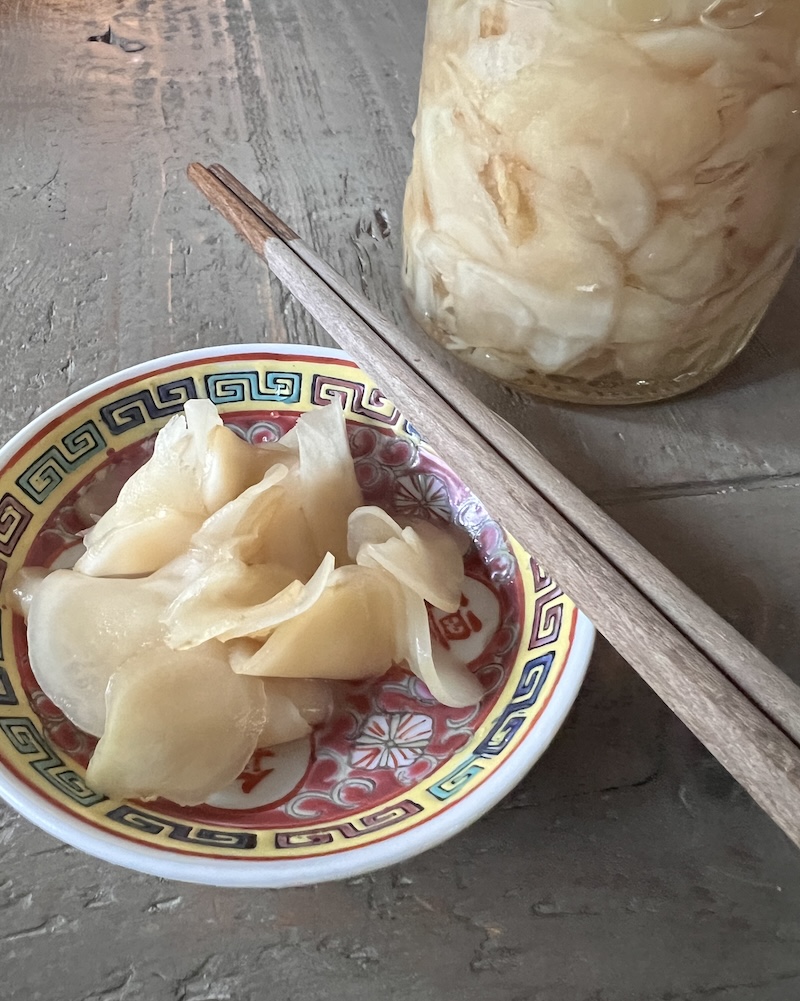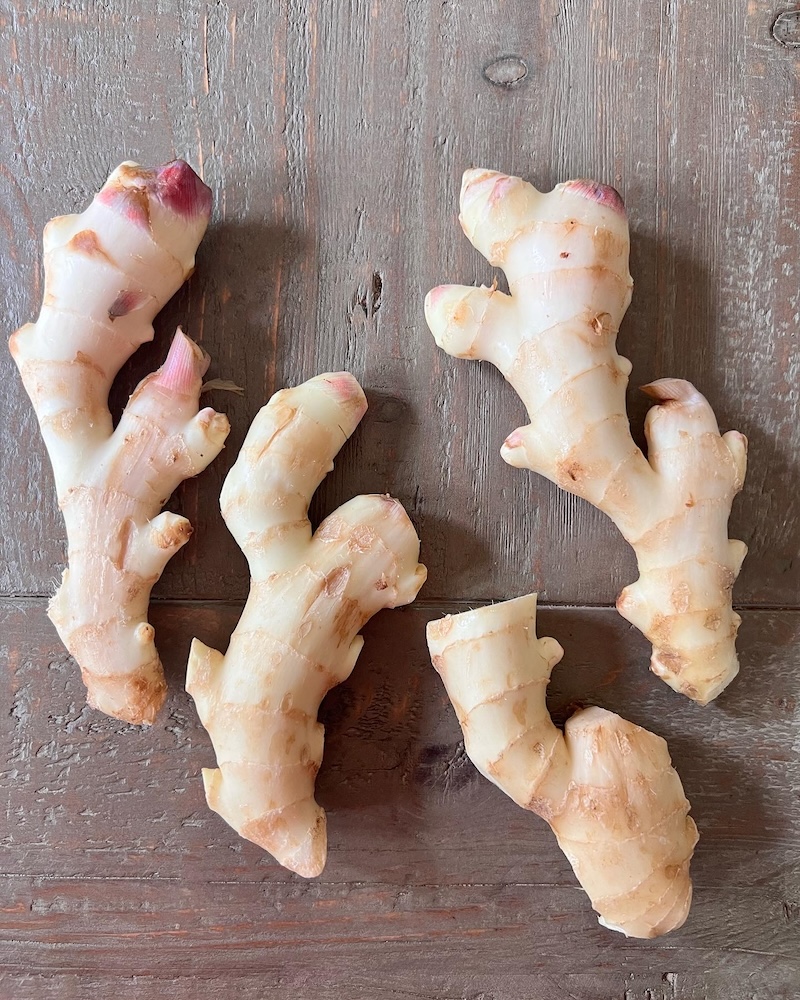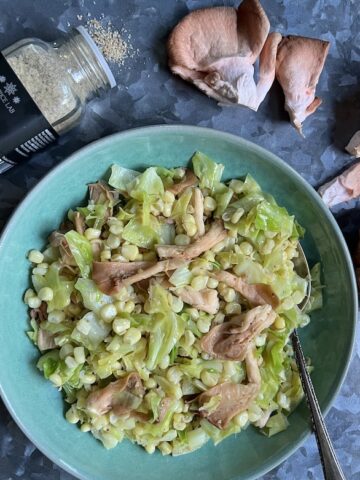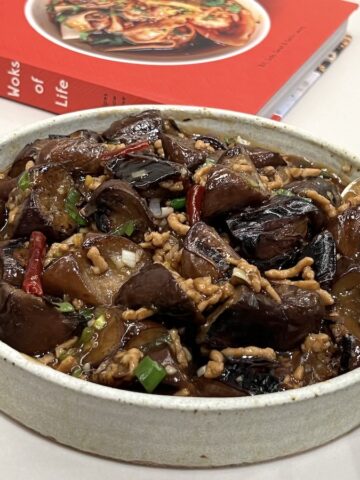
Sweet and slightly hot pickled ginger isn't just used in Japanese cuisine, and neither is it for sushi only. It's made in East and Southeast Asia and eaten as a snack, added to salads, and even thrown into stir-fries. This is a Cantonese-style recipe that's based on one in Eileen Yin-Fei Lo's 1988 cookbook, New Cantonese Cooking.
The only hard thing about making pickled ginger is finding the ginger. You need young ginger, which is a seasonal item at Chinese and Japanese markets in the early fall and spring. Start checking the produce sections in September and April, for example. It can be pricey for the younger, more tender and youthful ginger but homemade pickled ginger has a bright, clean taste. It keeps well for honestly -- years, unless you gobble it up fast! These came from Mitsuwa market in San Jose.

Can you use mature "old" ginger?
Some varieties of ginger, such as what is grown in China, has very mild flavor and smooth, creamy flesh -- even after the tan skin sets in. You could use that kind of ginger, usually sold at Asian markets, when young ginger is unavailable. It tends to be rather juicy ginger and bordering on bland but it can be pickled! Blanch and rinse it once because it's likely to have little bite.
How to slice the ginger thinly?
Use a very sharp knife or a mandoline. I prefer a Kyocera (ceramic) mandoline that easily adjusts to 4 different thicknesses. It stays sharp for many years. I use it in the how-to video below. There are two of them and the mandoline I have is adjustable.
What is the difference between Chinese and Japanese pickled ginger?
Chinese pickled ginger tends to be sweeter and not as delicate as Japanese pickled ginger. The former uses more sugar and white vinegar. The later employs rice vinegar in a larger quantity. Both are good. If you have rice vinegar and want to make Japanese gari, use this recipe! The kombu seaweed is a nice umami touch in that recipe. Otherwise, this Cantonese wor mei dzi geung recipe is swell.
Ginger Pickle Video Tips
Ginger Pickle
Ingredients
- 10 to 12 ounces young ginger
- 4 cups water
- ½ teaspoon baking soda
- ¾ teaspoon fine sea salt
- 6 to 8 tablespoons white vinegar, Heinz preferred
- ½ cup (100g) granulated sugar
Instructions
- Rinse the ginger then use the back of a paring knife or spoon to gently scrape off any loose flaps of skin. Trim any discolored tips. Pat dry.
- Using a mandoline or very sharp knife, slice the ginger very thinly, about 1/16 inch thick.
- In a medium (2 qt) pot, bring the water and baking soda to a boil. Add the ginger, boil for 30 seconds, then pull the pot from the heat. Add about cold water of water to cool fast, swish then drain in a strainer. Return the ginger to the pot, add cold water, then strain. Repeat once more. Taste the ginger. If you want it have slightly less heat, return the ginger to the pot, add water to cover, and let sit for 10 minutes. Otherwise, drain and let sit.
- Meanwhile, combine the salt, vinegar, and enough sugar to create a sweet-tart brine. Stir to dissolve the sugar. Warm in the microwave, if needed.
- Drain the ginger, then transfer half of it to a 2-cup (pint) size jar. Pour in some of the brine, stir to ensure things are well combined, push the ginger down to compact. Add the remaining ginger and brine. Push the ginger down to submerge. Make a little more brine, if needed, to cover the ginger.Cap and refrigerate at least 24 hours before eating. Keeps well for a good 6 months, if not much longer!
















